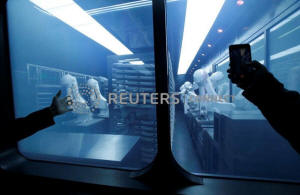|
The
study found U.S. tech giant IBM had by far the biggest AI patent
portfolio, with 8,920 patents, ahead of Microsoft with 5,930 and
a group of mainly Japanese tech conglomerates.
China accounted for 17 of the top 20 academic institutions
involved in patenting AI and was particularly strong in the fast
growing area of "deep learning" - a machine-learning technique
that includes speech recognition systems.
"The U.S. and China obviously have stolen a lead. They're out in
front in this area, in terms of numbers of applications, and in
scientific publications," WIPO Director-General Francis Gurry
told a news conference.
U.S. President Donald Trump has accused China of stealing
American innovations and technology and has slapped trade
tariffs on $234 billion of Chinese goods to punish Beijing.
China said in December it resolutely opposed "slanderous"
accusations from the United States and other allies criticizing
China for economic espionage and stealing intellectual property
and company secrets.
Gurry acknowledged there were accusations about China's behavior
but there was no doubt it had embraced the global intellectual
property system, with the world's largest patent office and the
largest number of domestic patent applications.
"They are serious players in the field of intellectual
property," he said.
The WIPO study analyzed international patent filings, scientific
publications, litigation filings and acquisition activity, and
found there had been as many patent applications for AI since
2013 as in the half century since the term was coined in the
1950s.
Patent applications in machine learning, which includes
techniques used by ride-sharing services to minimize detours,
averaged annual growth of 28 percent between 2013 and 2016, the
last year for which data is available, because of an 18-month
period before confidential applications are publicly disclosed.
Much of that growth came from deep learning, which overtook
robotics as it ballooned from 118 patent applications in 2013 to
2,399 in 2016.
The single most popular AI application was computer vision, used
in self-driving cars, and mentioned in 49 percent of all
AI-related patents.
The study showed how technology had followed science, Gurry
said, with the 2013 boom in technological applications coming 10
years after a similar surge in scientific publications.
However, the world did not have any reliable way of measuring
the quality of patent applications.
"If you did, you wouldn't need a venture capital industry," he
said.
(Reporting by Tom Miles, Editing by William Maclean)
[© 2019 Thomson Reuters. All rights
reserved.] Copyright 2019 Reuters. All rights reserved. This material may not be published,
broadcast, rewritten or redistributed.
Thompson Reuters is solely responsible for this content.

|
|





